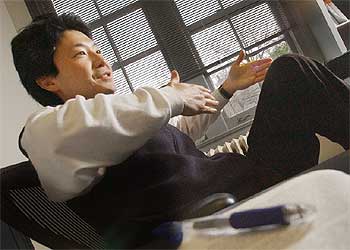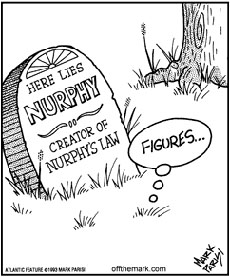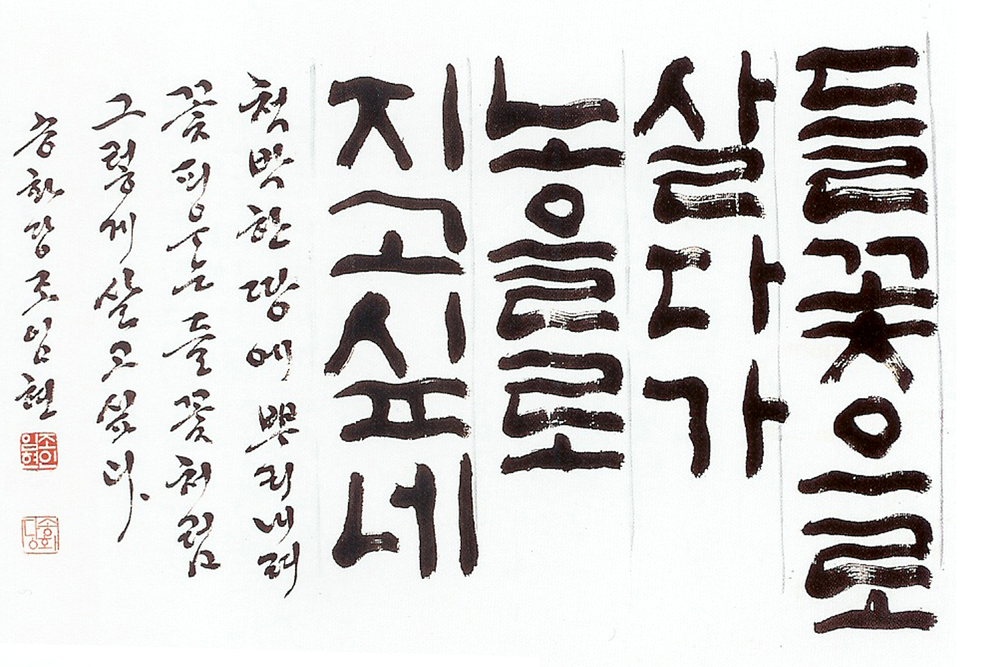Casualmente en los dos ultimos trimestres (septiembre y Febrero) encontré las dos novelas de Chang-rae Lee: A Gesture Life (1999), y Native Speaker (1995) respectivamente. En la pagina Goodreads se valoran con un 3.8/5 con unos 3.500 y 5.500 lectores, respectivamente.
Su ultima novela On Such a Full Sea (2014):
Against a vividly imagined future America, Lee tells a stunning, surprising, and riveting story that will change the way readers think about the world they live in.
On Such a Full Sea takes Chang-rae Lee's elegance of prose, his masterly storytelling, and his long-standing interests in identity, culture, work, and love, and lifts them to a new plane. Stepping from the realistic and historical territories of his previous work, Lee brings us into a world created from scratch. Against a vividly imagined future America, Lee tells a stunning, surprising, and riveting story that will change the way readers think about the world they live in.
Enseña writing a Princeton University, y ahora es director de Princeton's Program in Creative Writing.
A Gesture Life os dejo con las palabras de ELPais de 2004:

En las dos novelas que ha publicado hasta la fecha, el escritor Chang-rae Lee ha conseguido fijar con igual brillantez una voz personal y un territorio literario idóneo para que dicha voz se sienta a gusto. Lee nació en Corea del Sur, pero a los tres años emigró con su familia a Estados Unidos, y esa experiencia le ha llevado a escribir -en inglés- sobre la vida de los emigrantes asiáticos
- En primera instancia el lector la atribuye al tono reposado y juicioso con que el protagonista cuenta los hechos de su vida, pero a medida que avanza la historia y ese narrador va despojándose de su pasado sin ningún rubor (pero tampoco afectación alguna), el lector empieza a sentir una inquietud inconcreta y va comprendiendo que esa calma nace tan sólo de la resignación. La única redención, en fin, puede ser un nieto llegado de la nada, alguien que de alguna forma le ayude a "pasar por este mundo con algo más que una vida de gestos". Un libro precioso.
- the fictional novels of Korean-American Chang-rae Lee, Native Speaker (1995) and A Gesture Life (1999), demonstrate different ways in which language and voice are used to shape and distinguish an identity beyond the generalization of "Asian American." Each of the two works presents a varied representation of the "American experience" through the eyes of an Asian American (more specifically Korean American) protagonist. Lee emphasizes the use of language as a shaping agent of a character's individual identity, requiring the reader to reexamine notions of a generalized Asian identity, an Asian American identity--even who is and who is not American--and, at the same time, to reinterpret the definitions of an authentic American identity and a legitimate American experience.
Dejamos aquí una parte de la Entrevista del 2014:
APA: So regarding Joyce's work, was it both a thematic and stylistic sense that inspired you?
Chang Rae Lee: Yeah – definitely. And you know, a lot of his stories have the backdrop of - you know, these are stories of obviously Irish people – but his stories are always more about the idea that Irish people have no destiny over their own lives. You know that their destiny is in someone else's hands. And this yearning for a national and cultural identity – that also appealed to me but that was secondary, frankly because it was really mostly the language. The use of it.
APA: Are there any other particular authors that affected you in the same way as Joyce? Or just in general? Or even modern writers?
Chang Rae Lee: It's hard for me to say. At the time, I can definitely say that the writers that I admired a lot – like James Agee, Jack Kerouac, Walt Whitman, Hemingway. These days, I read so many different writers that I'm just kind of omnivorous. It's hard to say. I'm not – I don't know – it's not the same thing.
( ....)
APA: That's a very interesting way of looking at that. Some in the press have compared you to the Japanese British author, Kazuo Ishiguro of Remains of the Day. Why do you believe they make that assessment?
Chang Rae Lee: Well, I really think it has to do with A Gesture Life – you know the kind of story that is, the kind of character in that story. You know I don't find it as obviously as anything than a flattering comparison, but you know… but I just think that it's an easy one to make.
APA: Do you believe it's valid?
Chang Rae Lee: Well, no. I think it's valid to say that A Gesture Life and Remains of the Day have some similarities but that doesn't make me like him. I mean I think it makes me like him from other people's view. First of all that we're Asian and that we live in other places. So there's something to that, but you know, I mean to compare me to some other writer who probably wasn't Asian-American, whose story had some similarities – that wouldn't bother me.
(...)
APA: What is it about the issues of identity that fascinate you so much?
Chang Rae Lee: Well I think it's always about this drama between the self and his or her context because it's all about the interplay of those two things, it's not just we are ourselves. And we have problems, not because of who we are, it's always because of who we are in a place. For example, if I grew up in Los Angeles on the West Coast as opposed to New York where I wasn't living in an ethnic enclave, I was just living in the suburbs, I'll have a very different life, I'm sure. I think in my core I would be the same but I would probably have a different view of the world and of my own place in it. Right? Even just going to UC Berkeley or UCLA versus going to Yale - very different thing for an Asian-American.




![South Korea's first black model Han Hyun-min, whose father is Nigerian and mother Korean, grew up in Seoul and identifies as Korean [Courtesy of SF Models/Photograph by Park Jong-soon]](https://www.aljazeera.com/mritems/imagecache/mbdxxlarge/mritems/Images/2017/4/12/799ad2acb47c4a1691887ec450d9db45_18.jpg)



